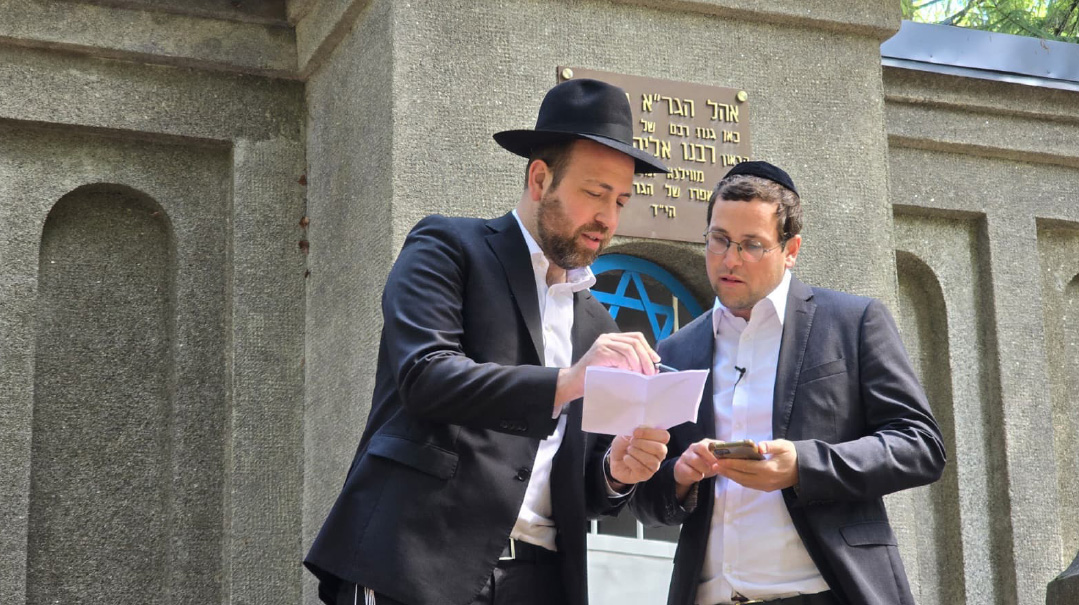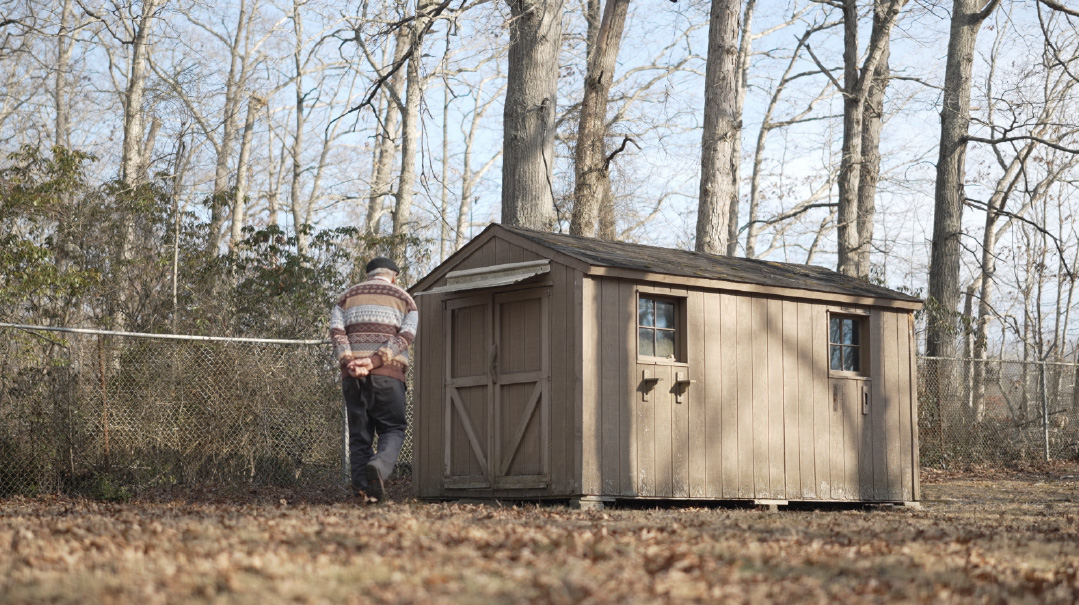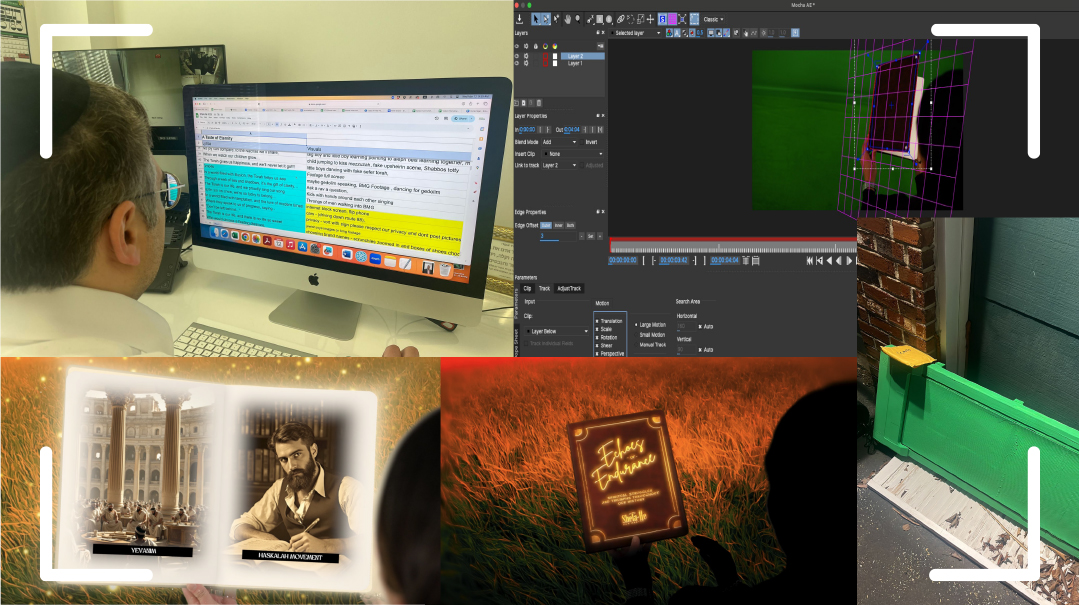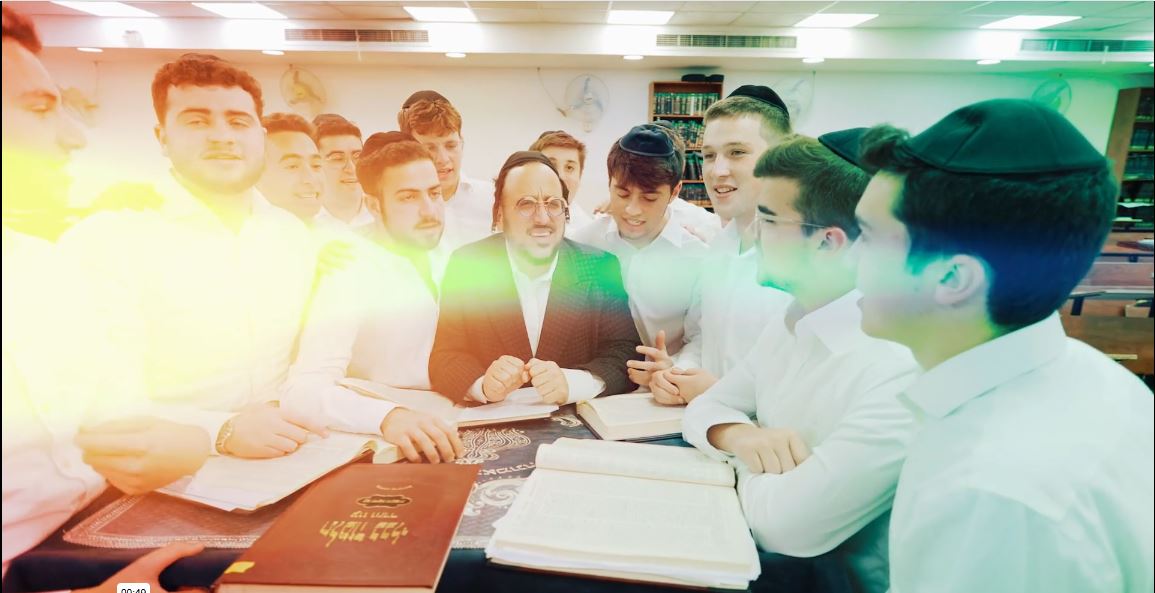Client: Agudath Israel of America
| September 12, 2023A creative twist unique to the Jewish music video scene
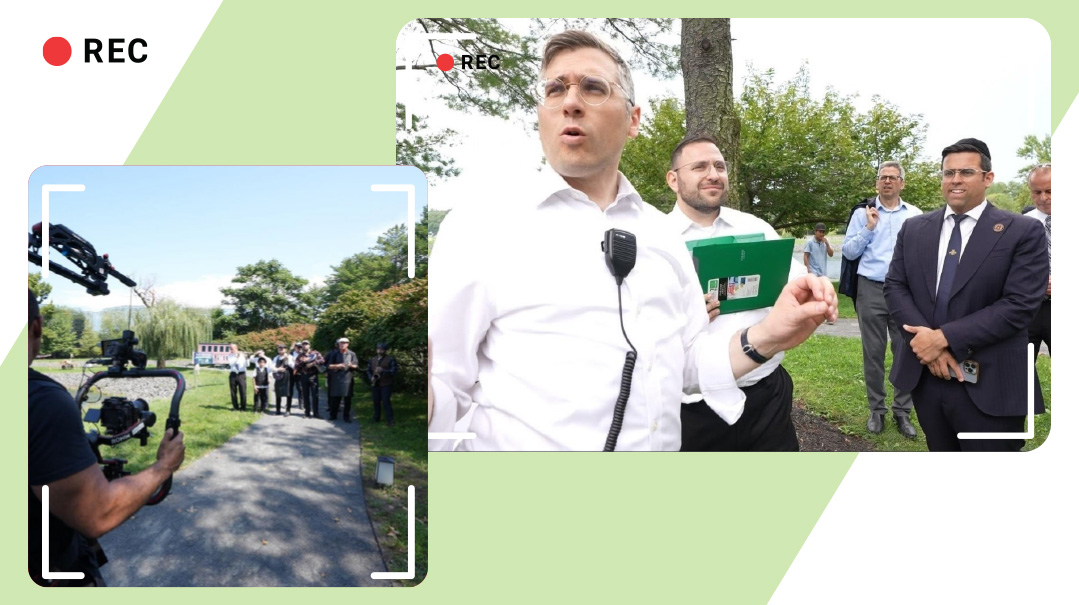
Client: Agudath Israel of America
Objective: Create a music video and a promotional video
Film locations: Path around a lake in northern New Jersey
Project Deadline: September 2023
The Proposal
Rabbi Shai Markowitz, director of Agudah’s Lefkowitz Leadership Initiative, asked me to produce something memorable for the organization’s annual campaign. We’ve worked as part of their video production team for the past three years, and I was excited to see what we could come up with this time.
The greatest marketing strength of an organization like the Agudah is also their greatest challenge: the sheer scope and variety of the services they provide. How do you put together a video that conveys the message of a special needs/yeshivah/parnassah/end-of-life/Daf Yomi Siyum HaShas services organization? How do you make a cohesive piece connecting all of these different branches?
Agudah pitched the idea of a music video. The lyrics would describe many of their divisions, and we’d arrange various scenes and setups to match them. Though I liked the idea of one song bringing it all together, I felt that breaking it into so many separate scenes would feel fragmented. In addition, setting up each scene properly would be tantamount to creating ten separate productions, which calls for a steep budget.
I countered with a slight tweak that could solve both of these issues and would provide a creative twist unique to the Jewish music video scene.
“Instead of filming all of these scenes individually, let’s have the singer walk down a long, meandering path,” I suggested. “He’ll encounter mini versions of what he’s singing about as the song and his walking progress.”
This would give flow to the production because the singer would take one journey, literally walking through the stations, as opposed to hard cuts from studio setup to studio setup.
This style also gives us more artistic freedom to build the stations we need in a more symbolic manner, allowing us to build smaller-scale renditions instead of large indoor sets, which also keeps the budget more contained. Last, we could tie the promo video to this concept with an Agudah representative walking down that same path of sets, giving a brief synopsis of each division as he passes its “station.”
Pre-Production
Agudah sent us a demo of the song, “Agudah — Together!” It was written and composed by Chayala Neuhaus and would be sung by Uri Davidi, and they provided us a general outline of which divisions fit with which lyrics.
Next we held an internal meeting to flesh out the scenes, starting with the beginning of the song, which calls for immigrants arriving on Ellis Island. We began brainstorming about props and costumes.
“I want to show the boat they came in,” I said, envisioning that iconic scene of an immigrant entering America with his battered old suitcase, looking to start life anew. Though we wouldn’t be able to stay historically accurate and get an actual steamship that would fit hundreds of passengers, we agreed that even an old-looking rowboat would help tell the story. I remembered that a friend of mine had a lakefront property with several boats.
“What kind of boat are you looking for? I don’t have anything fancy,” he said when I reached out to him.
“Perfect!” I responded. “The older and rustier, the better.”
He offered a faded rowboat, which fit our description, and we made a note for our driver to pick it up the day before the shoot.
Another scene was of a Jew being fired from his job because he refused to work on Shabbos; the script called for him to go from the fish store where he’d worked directly to his Shabbos table. As we traded suggestions of what a fish store employee would look like, senior production manager Moshe Niehaus interjected, “Aren’t we doing this as one straight video? The actors aren’t changing their clothing, but it won’t work to have him sitting at his Shabbos table in his apron and boots.” He thought for a minute and then suggested having another actor pose as his child, so the man enters the Shabbos scene to his son, dressed in Shabbos clothes, sitting at the table.

Props and Actors
Though we were aiming for a minimalist look, each of the ten scenes required many props and costumes. Amazon Prime is our best friend when it comes to a big shoot like this, and the Mint Media business account (and office floor!) fill up fast with odds and ends ranging from old-fashioned pocket-watches to a life-size cutout of the Statue of Liberty.
We researched things like how many pieces of fake ice it takes to fill three wooden crates, what kind of suitcase a 1940s immigrant would use, what size shirts our security guards need, and whether they wear shoes or boots. We researched and ordered (and sometimes re-ordered; apparently you need a lot of ice).
Senior editor Mrs. Devorah Loeb took charge of the props and costume division, organizing each scene on a separate document. The props were assigned boxes based on their scenes, which streamlined the big set-up.
Moshe Niehaus casted the actors and made sure they looked on point. He even instructed one actor to shave his beard but leave just a mustache to look the part of a 1940s fish store owner.

Crew Favorite: Don’t miss the actor who nails the emotional role of a patient on his deathbed. Stick around for the final scene—it’s got a surprise twist!
Music in Motion
Timing is a key word in our line of work, but when it comes to shooting a music video, it takes on a whole new meaning. The actual song is pre-recorded in a recording studio, and the singer lip-syncs on our shoot. This allows for better sound quality and also gives the singer space to focus on dancing and acting in our video.
In order for lip-syncing to look genuine, everything has to line up perfectly. We accomplish this by bringing two powerful speakers that are linked to each other, with one placed close enough to the singer so he knows exactly what to sing, and the other near the director and camera, which will guide both the directing in real time and matching up the video to the audio in post-production.
There is a lot of walking (and dancing) when we record a music video, and the camera is always on the move. Our main cinematographer didn’t trust himself to keep the camera steady for so long, so he used a camera rig, which straps the camera in a harness to his body. This helps support the camera, keeping the shots consistent.
He also brought a portable monitor, a separate screen that is wirelessly connected to the camera and shows the footage as he’s taking it. This allowed me to direct from a (little more of a) distance without hanging over his shoulder to see the shot. It did give me a momentary scare, though, when I noticed Uri’s lip-syncing was slightly off, until I realized that the monitor had a tiny time lag from the actual camera!
In the end we had to have several people around the shooting for this video — me, to watch the monitor and direct, Moshe Niehaus to physically guide our backward-walking cinematographer, associate video editor Usher Weldler to ensure that Uri’s lip-sync was perfectly aligned, and someone to shout out the lyrics slightly ahead of the track to make sure Uri had it right. Whew!
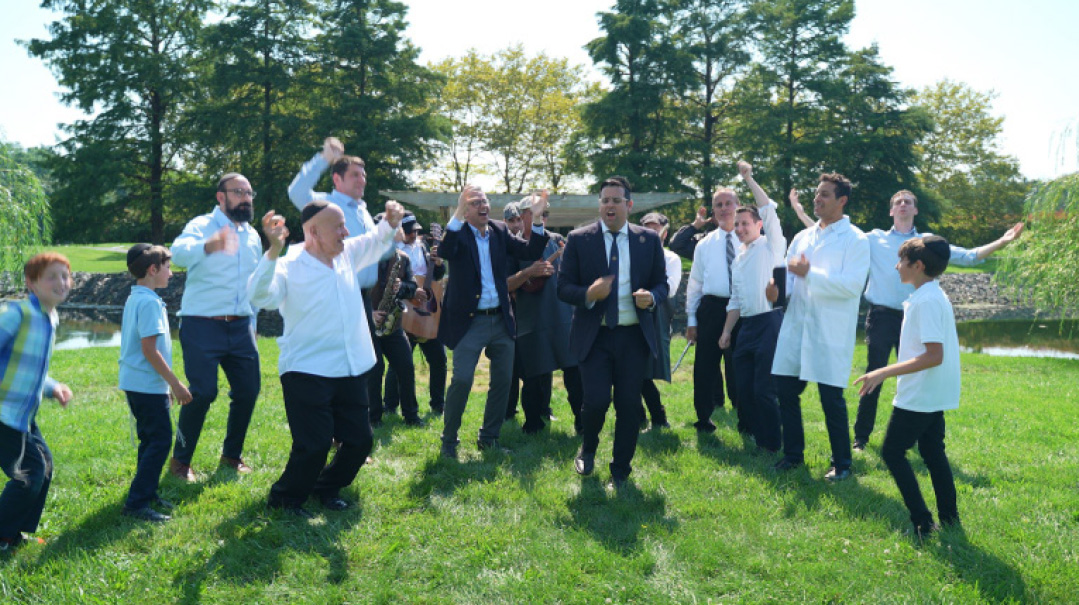
More than just a great singer, Uri Davidi’s standout acting anchors the entire video. He showcases a range of talents that elevate the whole production
All Hands on Deck
The shoot was one of our larger-scale productions, both in terms of the sheer scope and the complex logistics.
There were around 30 people on the set:
1 singer (Uri Davidi)
1 Agudah representative in the promo (Rabbi Avi Shnall, director of Agudah’s New Jersey office)
17 hired actors
3 cinematographers
2 directors, me and Moshe Niehaus, with
1 executive producer from Agudah (Rabbi Shai Markowitz)
3 Mint Media staff helping with scene setup and costume
1 (real) security guard to secure the perimeter as well as the staff we brought to help with setup and cleanup.
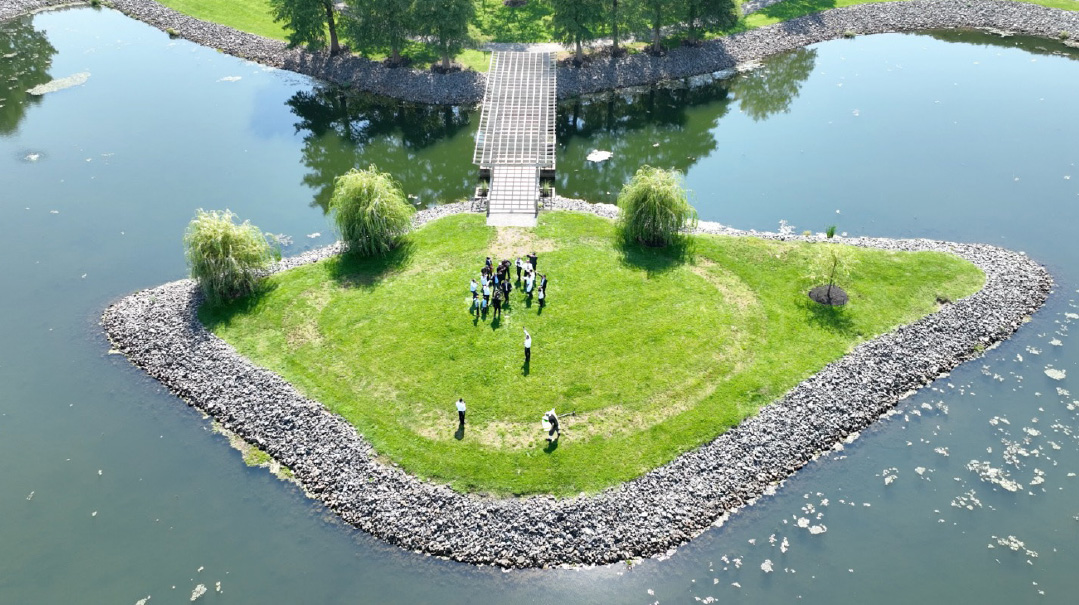
The film set leads to a charming island, connected by a bridge, setting the stage for the song finale
Props to You
We purchased more than 50 products on Amazon (this is on top of the ones we borrowed or rented). We also came with 15 custom-printed cutouts, most of which needed their own stands, so we ended up renting a truck to haul all the props and equipment. Then we quickly learned that trucks are not allowed on the Garden State Parkway, and we had to map out an alternate route that took only local roads.
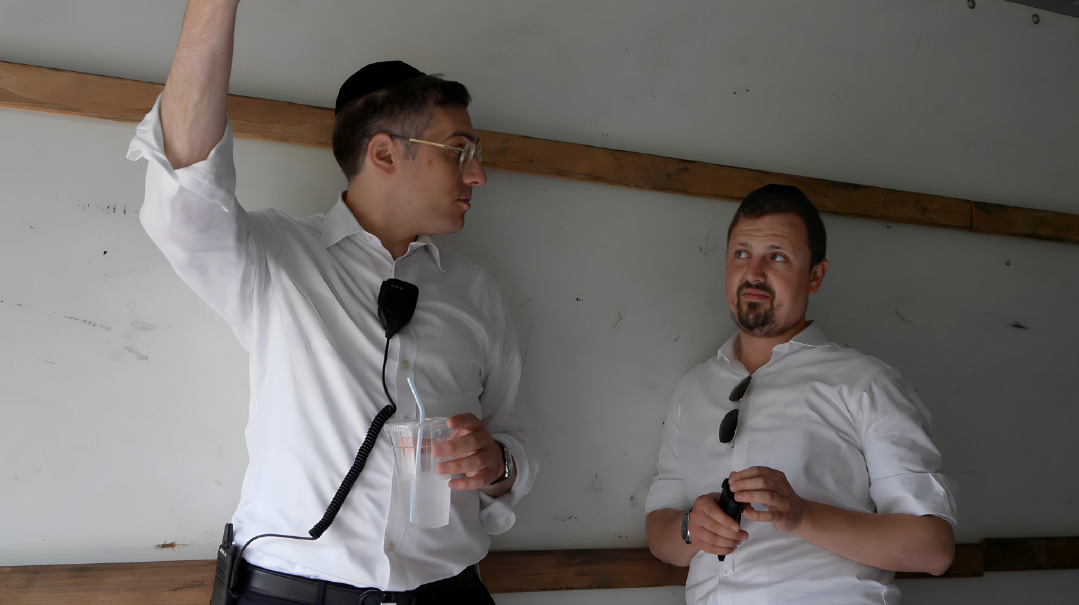
Discussing the plan with Associate Editor Usher Weldler in a rare moment of calm, ironically because of the storm
The Great Outdoors
Though the scenery at the shoot was breathtaking — a grassy path winding around a peaceful lake — shooting outdoors brings its share of challenges. In the seven hours we were there, we felt like the postal service; we had to deal with rain, wind, and scorching heat. Several of our props weren’t waterproof, and when it started raining, we had to quickly reload them onto the truck. The wind also was a big factor; many of our logos were on fairly light easels, and we were constantly readjusting them. When it came to Lady Liberty, our largest and lightest prop, Mrs. Loeb actually crouched behind it and held it up to keep it from swaying or falling!

Under the tireless leadership of Senior Editor Mrs. Devorah Loeb, we managed to fill an entire truck with carefully selected props
Callback
Juggling all of these moving parts was a logistical and creative challenge, but that just made it more gratifying as the day progressed. The pieces started coming together, and we saw our hard pre-production work — the brainstorming and the spreadsheets and the boxes and boxes of props — taking shape before our eyes.
There’s nothing like it, but it’s also exhausting — especially when you’re working outside in such extreme weather. The heat — 92 degrees! — was tough on everyone; we literally baked. We drank more than a hundred bottles of water and didn’t apply enough sunscreen. (The shoot was on Labor Day, and when so many of the crew returned home with burns or tans, their friends assumed they had been vacationing and asked if they spent the day at the beach.)
In fact, after we finished, Usher Weldler asked the cameraman, who had been lugging the camera around all these hours, “What are your plans for the rest of the day?”
“I was planning on going to the beach,” he said, “but I think I’m heading to bed. I’m beat!”
(Originally featured in Mishpacha, Issue 978)
Oops! We could not locate your form.

